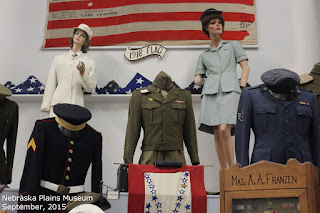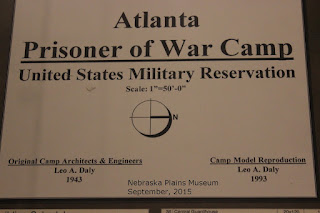Alma is a lovely little town of 1,300
and a median income of 40K and an average home price of 49K. Most of
the homes we saw were nicely kept up and the town seemed busy with
most of the old buildings filled with stores open for business. What
was once probably a hotel had been turned into shops on the lobby
level and apartments above. Other businesses served multiple purposes
as well: you could pick up your dry cleaning in the variety store and
you could rent DVD's in the hardware store. The grocery store had a
tent-like duck blind for sale in the front of the store. We found
dried beef in the deli case – first time ever for me (I've always
seen it in glass jars) and I can't wait to fix some dried beef gravy
over biscuits.
The campground was mostly empty and
that may be because it was not as well-run as most other corps parks.
The dump station had a bar welded across the drain so it was
impossible to hook up the hose; the fresh water fill station was so
close to the dump station if one unit was dumping another couldn't
fill the fresh water tank; the restrooms needed updating and the
water in the shower never got warmer than lukewarm. The sites are
large and well-spaced although the little pea-sized gravel in the
site drive made it difficult to get the RV level.
A wedding was held one afternoon in the
middle of our loop with loudspeakers that would have done an arena
proud. Apparently, according to the folks setting up the wedding and
reception, we were supposed to have been told about it and offered a
chance to move. We weren't and the reception continued, music blaring
until nearly midnight. I finally lost patience and had the host call
the sheriff (we had no cell service there). It was quiet soon
thereafter.
While there wasn't much to see around
Alma, just down the road near Atlanta, Nebraska was the highlight of
our say here: the Nebraska Plains Museum. Most if not all of the work
was done by volunteers and the exhibits were donated by locals –
one woman's china, another's glassware, an uncle's woodworking tools.
There were probably 20 old manual typewriters, all different. A large
area was set up as a town square with 15' x 15' “businesses” with
representative goods and furnishings in each. Outside boasted a
church, a home circa 1890's and a POW guard tower to represent the
portion of the museum dedicated to the armed forces and the German
prisoner of war camp that was located a few miles down the road and
was the base camp for the 18 POW camps in the area.
The Thomas F. Naegele collection of
paintings “In the Eye of the Storm” is also on display in the
museum. These paintings capture the daily life in the prison camp
through the eyes of Naegele, who was a soldier and acted as
interpreter at the camp. Mr. Naegele went on to have a very
successful career as a graphic artist in NYC and generously donated
his artwork to the museum.
The entire population of the county in
1940 was fewer than 9,000 persons and most of the men between 18 and
35 had volunteered or been drafted into military service which meant
that about 50% of the adult male population was out of the area. Many
of the folks left in the area had jobs in the military production
facilities thus depleting the workforce for local jobs. Much of the
economy of the area was agricultural but many “town” jobs were
short of skilled labor as well.
German soldiers, few of whom were
sympathetic to Nazi Germany goals, were happy to train and work both
in camp and local jobs for pay. A total of nearly 100,000 prisoners
passed through Camp Atlanta's gates and were housed there or sent to
one of the other 18 POW camps in the area.
Within six months of the end of the war
in Europe, all 18 of the other camps had been closed. Less than a
month later the entire Camp Atlanta was deactivated and the POW's
were sent on their long journey home. Often, they were detained in
other European countries and Russia as workers, some didn't reach
their final destinations for two and three years. Still others never
made it. More than one former prisoner came back to the US after
being returned to his home country. One brought his whole family and
practiced medicine in Scottsdale, AZ into the late 1900's. Another
returned with his family and farmed nearby. Some former prisoners
wrote to friends they had made of guards and locals that there was no
food to be had in Germany – no gardens left nor livestock. The news
prompted many boxes of food to be shipped to former prisoners.
For the most part, it appears that the
majority of prisoners were happy, but all the stories weren't happy
ones. About 8% of the POW's in the camps were sympathizers with the
Nazi goal – mostly SS agents and the like. Sadly, these men were
said to be responsible for 72 coerced “suicides.” Perhaps more
sobering was that at the end of the war, Stalin had insisted that all
Russians in German uniforms be sent back to Russia first. There,
immediately upon disembarking from the ships they were herded into a
dockside warehouse and shot as traitors. [“The Last Secret” by
Nicholas Bethell, 1974]
We spent several hours there and could
easily have gone back the next day. While the museum wasn't glossy
and sleek like new museums, we were blown away with the number and
depth of the displays and information. If you're ever in the area,
it's a place you shouldn't miss.
Next stop: Riverside Park in Ellis,
Kansas.













































































No comments:
Post a Comment